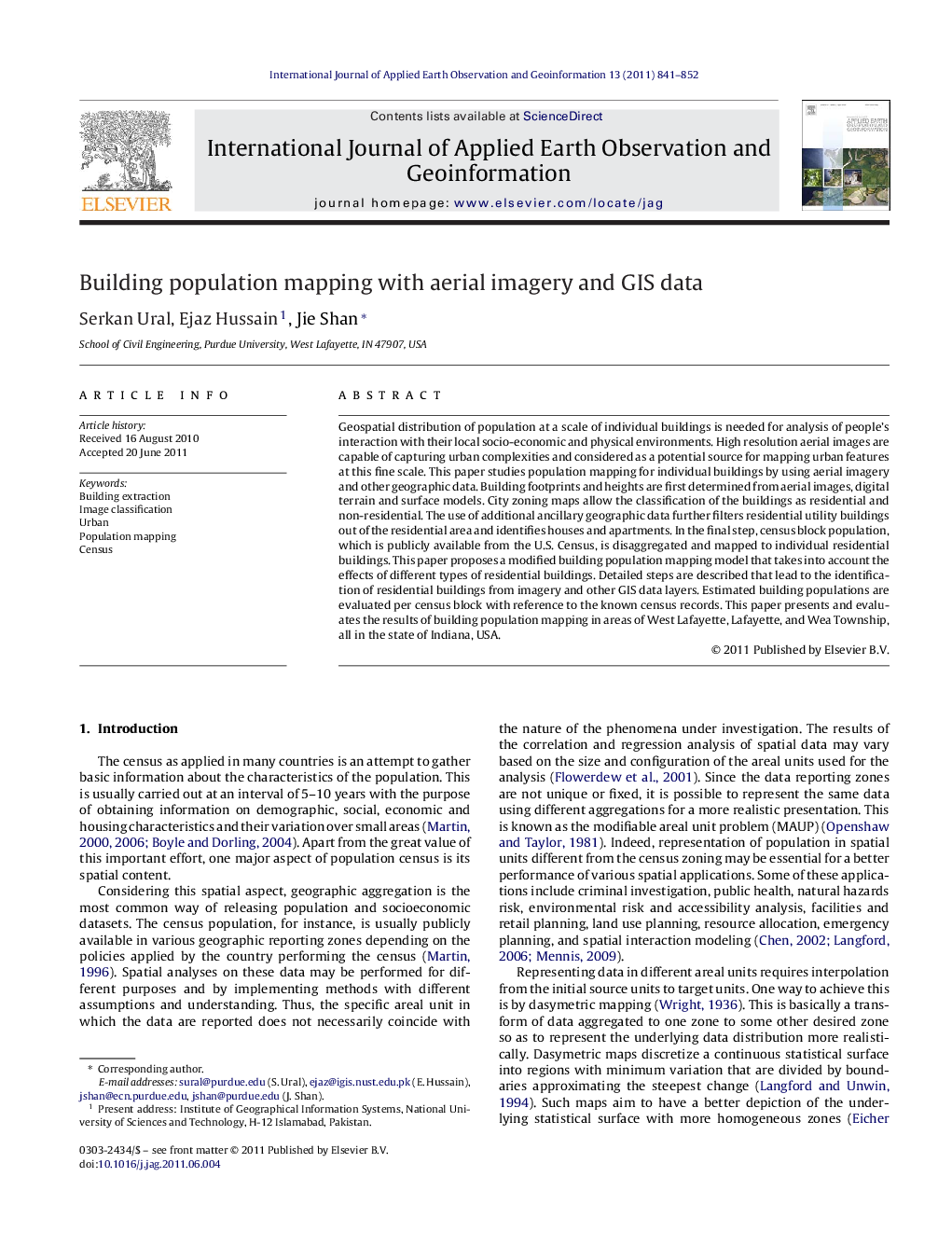| Article ID | Journal | Published Year | Pages | File Type |
|---|---|---|---|---|
| 4465167 | International Journal of Applied Earth Observation and Geoinformation | 2011 | 12 Pages |
Geospatial distribution of population at a scale of individual buildings is needed for analysis of people's interaction with their local socio-economic and physical environments. High resolution aerial images are capable of capturing urban complexities and considered as a potential source for mapping urban features at this fine scale. This paper studies population mapping for individual buildings by using aerial imagery and other geographic data. Building footprints and heights are first determined from aerial images, digital terrain and surface models. City zoning maps allow the classification of the buildings as residential and non-residential. The use of additional ancillary geographic data further filters residential utility buildings out of the residential area and identifies houses and apartments. In the final step, census block population, which is publicly available from the U.S. Census, is disaggregated and mapped to individual residential buildings. This paper proposes a modified building population mapping model that takes into account the effects of different types of residential buildings. Detailed steps are described that lead to the identification of residential buildings from imagery and other GIS data layers. Estimated building populations are evaluated per census block with reference to the known census records. This paper presents and evaluates the results of building population mapping in areas of West Lafayette, Lafayette, and Wea Township, all in the state of Indiana, USA.
► The proposed model considers the effects of different types of residential buildings. ► Building footprints and heights are derived from images, digital terrain and surface models. ► GIS data separate houses from apartments. ► Estimated building populations are evaluated with reference to the known census records.
